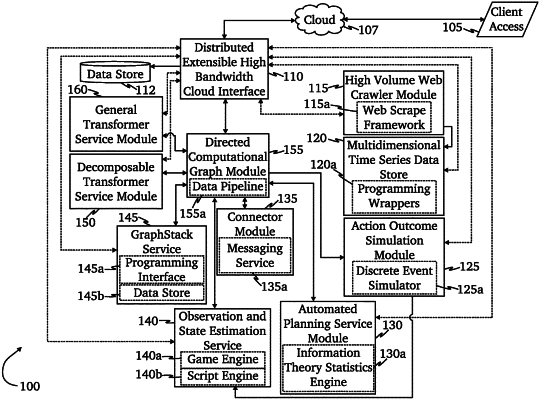| CPC H04L 63/0428 (2013.01) [G06F 16/951 (2019.01); G06N 7/01 (2023.01); H04L 9/14 (2013.01); H04L 9/3236 (2013.01); H04L 9/3297 (2013.01); H04L 63/061 (2013.01); H04L 63/08 (2013.01); H04L 63/1408 (2013.01); H04L 63/1433 (2013.01); G06N 5/01 (2023.01); G06N 5/045 (2013.01); G06N 5/046 (2013.01); G06N 20/00 (2019.01); H04L 9/50 (2022.05); H04L 63/0442 (2013.01); H04L 63/123 (2013.01); H04L 2463/082 (2013.01)] | 14 Claims |

|
1. A system for risk analysis using port scanning for multi-factor authentication, comprising:
a multi-dimensional time series data server comprising a memory, a processor, and a plurality of programming instructions stored in the memory thereof and operable on the processor thereof, wherein the programmable instructions, when operating on the processor, cause the processor to:
monitor and store a network's traffic data; and
serve traffic data to other modules; and
a directed computational graph module comprising a memory, a processor, and a plurality of programming instructions stored in the memory thereof and operable on the processor thereof, wherein the programmable instructions, when operating on the processor, cause the processor to:
receive traffic data from the multi-dimensional time series data server;
identify a connection attempt from a user device to a destination device with unknown risk potential;
scan a plurality of network ports at the destination device;
analyze the scan results to determine at least a plurality of open ports at the destination device and a plurality of closed ports at the destination device; and
determine a required verification score for granting access to a network resource based at least in part on the open and closed ports on the destination device;
wherein a plurality of verification methods is used to build up a user's verification score to the required verification score in order for the user to gain access to the destination device.
|